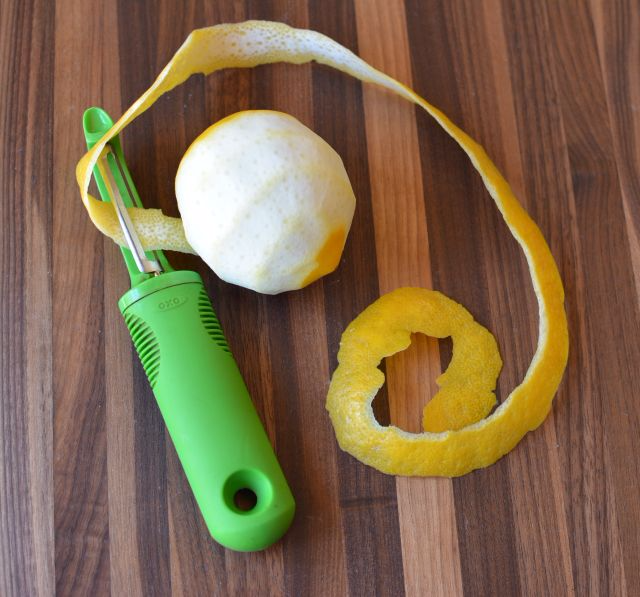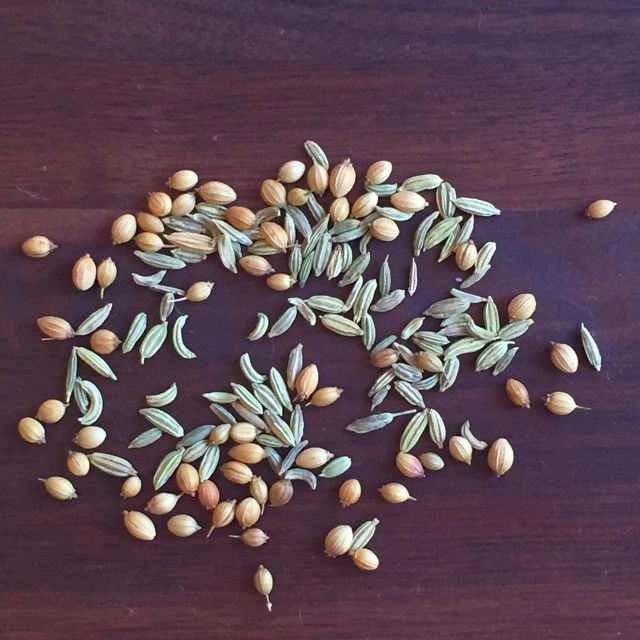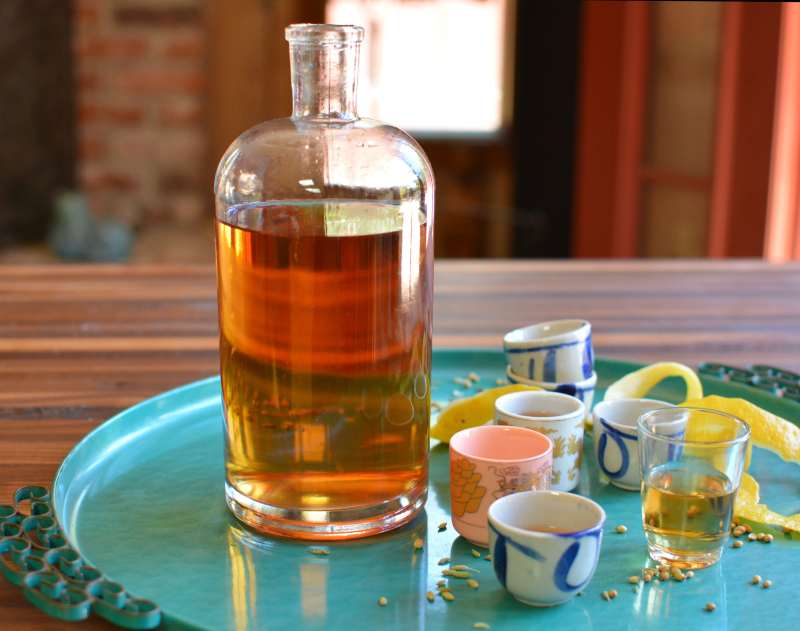I started making this plum liqueur last August or September with plums from our farmers’ market. They were late season and not the sweetest so I decided to not only sweeten them up but also to liquor them up. My inspiration came from a plum wine recipe in Bon Appetit magazine that included 3 ingredients: fruit, vodka, and sugar plus a lot of time. (The magazine called their concoction a wine but it’s technically a liqueur since it’s made from distilled spirits, fruit, and sugar.) We had a partially full bottle of Costco vodka that we decided we didn’t like much so I had liquor to experiment with.
I followed the directions and stashed the jar of plums, alcohol and sugar in the closet. Then I waited 3 to 4 months, thinking we’d have something special around the holidays. When I checked it close to Christmas, it was very sweet and not overly complex. It tasted like a strong version of the Japanese plum wine that you buy at the store. The magazine recipe described the result as floral and sherry-like. I wasn’t getting that.
I was dissatisfied and decided to add aromatics: Meyer lemon peel, fennel and coriander. Then I put the jar back into the closet, a space that I use as a pantry for food-related stuff.
Months later after winter had turned into spring, I rechecked the plum liqueur and it was much better, worthy of drinking. I strained and we began sipping on it over ice as an aperitif, and after dinner as a digestif. It was fun but it was still very sweet. A cocktail made with fresh pink grapefruit juice added a bittersweet edge that was good. I used pink grapefruit juice to retain the plum liqueur’s cheery color.

Now that it’s summer, the plum liqueur seems too heavy. We set it aside in the booze cabinet. A trained chef and food writer friend, Mary-Frances Heck, came over for dinner last weekend and the weather was unusually dreary and chilly for summertime here in Santa Cruz. We’d been drinking a lot of rose wine so we brought out the plum liqueur to stay in the pink spirit.
Mary-Frances took one sip and pronounced it wonderful. I was asking her to figure out some kind of cocktail to make with it because we thought it was too sweet on its own.
“It’s perfect for sipping on its own,” she declared. “I can see this being served around the holidays.”
True, but how much of it can people take? Then Rory and I sipped on the plum wine and its former sweetness had mellowed out.
“It tastes like something a monk in the mountains would make,” I said to Mary-Frances. “It’s much better than it was a little while ago.”
“Yes, like a form of Benedictine. It’s delicious, brilliant,” she responded. We drank some more of it.
I was very flattered because Mary Frances has been around lots of good food and drink, and I was basically just fooling around. But my experiments yielded some simple, valuable lessons: You can tweak the plum liqueur (and similar kinds of concoctions, I imagine) as it develops and it changes character over time. For example:
- Reduce the sugar by 25 percent, if you want to hedge on the sweetness. Add extra sugar later if it’s not sweet enough.
- Use a different kind of citrus peel, such as orange or grapefruit.
- Try a cinnamon stick or a couple of star anise instead of, or along with, the fennel and coriander.

If you have a couple pounds of plums this summer and vodka, add sugar and aromatics to fashion you own plum wine for the holidays. This is something to make now for drinking later.
Recipe
Plum Liqueur
Yield: About 3 cups
Ingredients
- Peel from 1 large lemon
- 2 rounded teaspoons fennel seed
- 2 rounded teaspoons coriander seed
- 1 ½ to 2 cups (10.5 oz | 420 g) sugar, organic preferred
- About 2 pounds (900 g) plums, smaller kind preferred
- 750 ml bottle of vodka
Method
- In a large jar, combine the lemon peel, fennel and coriander seeds, and sugar. Add the plums, then pour in the vodka. Cover tightly and set aside in a cool, dark spot for 3 to 4 months. Three-quarters of the way through, check the flavor. If needed, tweak with sugar and spices.
- When you’re satisfied, drain and drink. (I tried eating the fruit but it was intensely alcoholic-tasting so I discarded it. You may find a use for it.)
Originally inspired by a recipe at Bon Appetit magazine.
Related post:
- Shiso Drinking Vinegar for homemade sodas and cocktails
- Singapore Sling – the original recipe, may be a nice spot to try using some of this plum liqueur as a sub for the Benedictine



















Carole Eidsvoog says
Do you have to peel and pit the plums? My plums are even smaller than the ones shown. I have so many of them and would like to do something. Thanks!
Andrea Nguyen says
I did not. I've made Japanese plum wine too and did not pit. Go for it!
Emily says
Can you use ripe prune plums?will halving it create more flavor as the flesh is exposed.. I presume also they should be washed and dried before using.
Andrea Nguyen says
I think so. I would not hurt in this recipe.
I have a Japanese plum wine recipe that depends on green/hard unripe plums. https://www.vietworldkitchen.com/blog/2017/06/japanese-plum-wine-recipe-umeshu-1.html
Anupama Chib says
Just confirming. We just use the plums whole, without peeling or pitting them? Thank you
Andrea Nguyen says
Correct, no cutting into the plums needed. Thanks for asking.
Ezequiel says
I used the alcohol tasting fruit in a pound cake. It was delicious and made the whole experience zero waste.
Andrea Nguyen says
Excellent! Thanks for the tip.